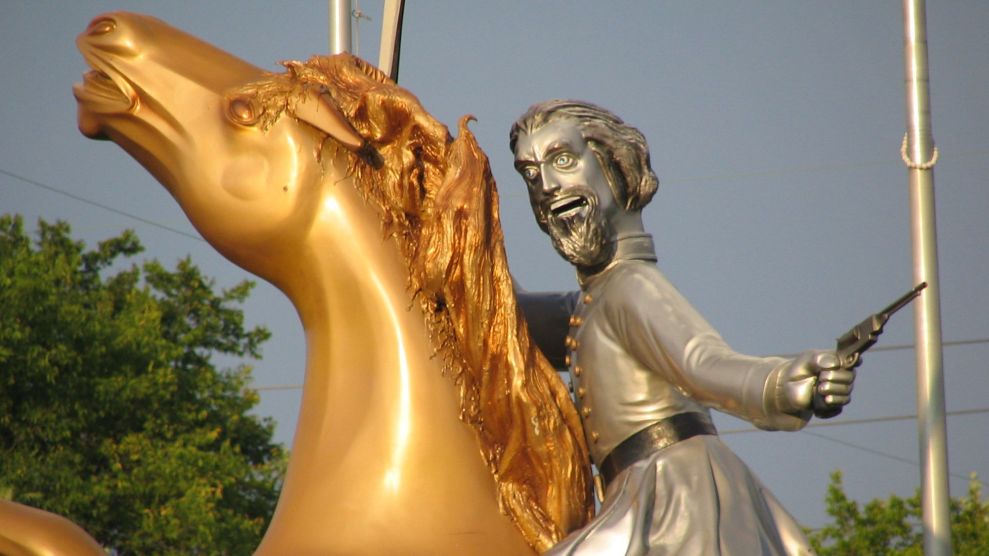
Brent Moore/Flickr
When I heard the news that the incredibly stupid-looking Nathan Bedford Forrest statue in Nashville, Tennessee, was finally taken down after two decades, I thought back to a moment in the John le Carré novel Tinker Tailor Soldier Spy, when the Communist mole (name withheld) says that his decision to defect to the Soviets was “an aesthetic choice as much as a moral one.” I had this thought because taking down this statue was a good aesthetic choice as much as it was a good moral one. In addition to depicting a white supremacist mass murderer, the statue was objectively hideous.
The fiberglass abomination was sculpted in 1998 by Jack Kershaw, the former attorney for Martin Luther King Jr.’s assassin and the founder of the white nationalist organization the League of the South, which the Southern Poverty Law Center has designated a hate group. Kershaw was seemingly unaware of how dumb the statue looked. When faced with complaints about his creation, he told the Times-Picayune that “somebody (needed) to say a good word for slavery.”
Standing 25-feet-tall in plain view of the highway, the statue was an appropriately deranged monument to American racism. It depicted Forrest, a Confederate general who directed the massacre of mostly Black Union soldiers during the Civil War after they had surrendered. Forrest later led the Ku Klux Klan while it waged a domestic terror campaign during Reconstruction. But the statue, which appeared to be screaming in pain or rage, bore only a passing resemblance to Forrest.
With its maniacal eyes, disproportionate head, and violently contorted posture, it consistently served as fodder for late-night hosts and an embarrassment to the city of Nashville, which passed a resolution to obscure it with vegetation. In 2015, Gawker deemed it “the most fitting monument to the ugly idiocy of southern history” and argued that it should be kept forever because it is “so hilariously stupid.”
I have some sympathy for this perspective, but it’s also worth congratulating Tennessean motorists, who are no longer cursed with a highway view of one of the ugliest statues in the United States. So, congrats, Tennessee! You’ve rid yourselves of a bad one.
















